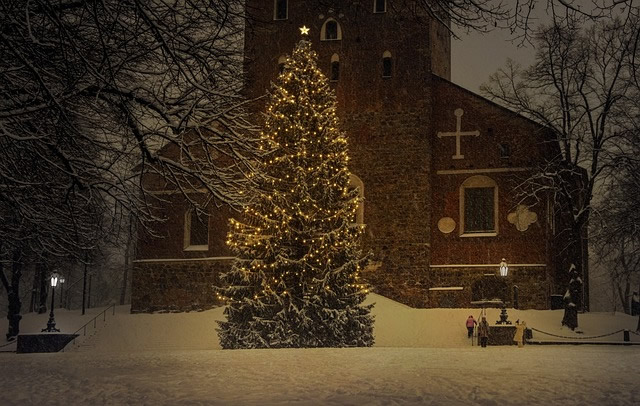先日から「The overlooked benefits of real Christmas trees -「本物のクリスマスツリーの見過ごされた利点」を読んでいます。

・「本物のクリスマスツリーの見過ごされた利点」(1)
・「本物のクリスマスツリーの見過ごされた利点」(2)
・「本物のクリスマスツリーの見過ごされた利点」(3)
“There’s a lot of folks that don’t interact with nature a lot,” says Kosiba.
「自然との触れ合いが少ない人が多いんです」とコシバ氏。
“It is pretty cool to think all these people are bringing a tree [...] into their house [and] sort of revering it, and appreciating it.”
「そういう人たちが自宅に木を持ち込んで敬い、鑑賞するのは素晴らしい事です。」
revere「(英雄、著名人等を)崇敬・崇拝・尊敬する、(神や祖先等を)あがめる」。
This festive appreciation may be a good opportunity to consider the wider role of different trees, and how and where they are grown.
この祝祭の機会に、様々な木がどんな役割を果たし、どこでどのように育てられているのか、考えてみるのはどうだろう。
Christmas trees are typically young spruce, fir or pine trees from plantations, which means their environmental impact will always very much depend on what might be grown on land instead.
クリスマスツリーは通常、トウヒ、モミ、マツの若木をプランテーションで栽培するため、その環境負荷は常に、代わりに栽培されるものに大きく依存する。
It goes without saying that old growth forests, peatlands and other native habitats should never be used to plant Christmas trees.
言うまでもなく、原生林や泥炭地などの自生地は、決してクリスマスツリーの植樹に使われてはならない。
The plantations are grown for roughly 10 years before harvesting, meaning that for every tree cut down one year, another nine or so stay standing.
ツリー用の木は伐採まで約10年育てるので、1年に1本伐採され、9本前後の木は残る。
“It’s quite nice as a way of maintaining a set of trees, because you always need the new trees coming through to be harvested the following years,” says John Kazer, footprint certification expert at the Carbon Trust, a UK-based environmental consultancy.
「翌年には必ず新たに伐採せねばならないので、一定量の木々を維持する方法として非常に優れています」と話すのは、英国の環境コンサルタント会社、カーボン・トラストのフットプリント認証専門家であるジョン・カザー氏。
10年育てて出荷する、だから準繰りにまた苗木を植えて、常に一定量の森が維持される仕組みになっているんですね。
美しい木を育てるには、きちんと管理をして面倒も見る必要があるので、結果的に森林区域の保全になっているとも言える。
育てる場所もしっかり選べば、そう環境に悪い話でもないという感じなんですかね。
理由は単純明快!「少ないコストでしっかり楽しく学べるから」。
私自身の経験(高機能でビックリ)をびっしり書いていますので、良かったら読んでみてください。
下のバナーからどうぞ!






